After Los Angeles became an incorporated city in 1850 wealthy Angelinos began building large Victorian homes on the hill just West of the downtown area. This area, known as Bunker Hill, was not only convenient to downtown but offered commanding views of the city. It soon became the most fashionable neighborhood in the city In 1901 a funicular railway was built to carry passengers from Bunker Hill to the burgeoning downtown area below. This railway was dubbed Angel’s Flight and was billed as the world’s shortest railway. An adjacent tunnel was built on Third Street to carry vehicular traffic from the West to downtown.
By the 1930s Los Angeles had grown rapidly and Bunker Hill had been eclipsed by more desirable areas such Pasadena and Beverly Hills. Bunker Hill experienced a long downward slide as many of the Victorian mansions were converted into boarding houses. Cheap hotels and apartments sprang up to accommodate an influx of dust bowl migrants and later the blue collar workers who filled the defense industry plants during WWII. After the war parts of Bunker Hill had become downright seedy and that added to its allure. The unusual architecture, dilapidated buildings, dark alleys and numerous stairways could not have been duplicated on any studio lot. This was the real deal. And for a short period of time filmmakers made good use of all it had to offer.
But by the mid 60s it was all gone. Bunker Hill had been put into a massive redevelopment project. The entire area was cleared and transformed by high-

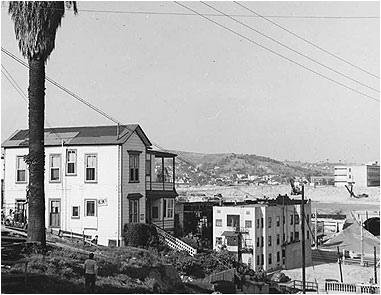
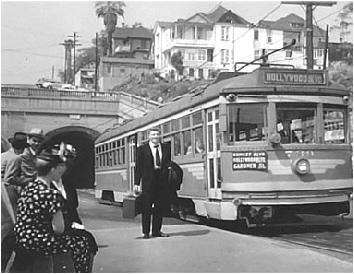
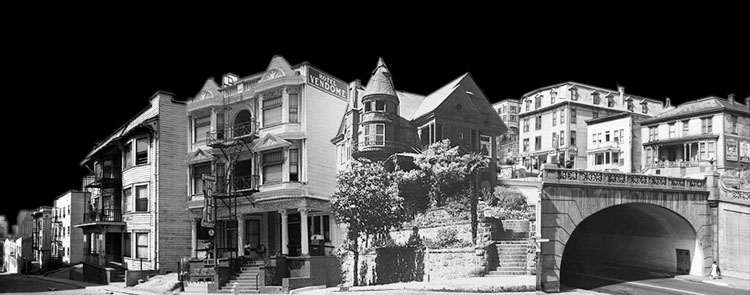



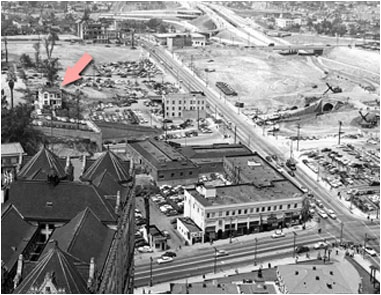
Criss Cross -
The streetcar has just come through the tunnel known as the Hill Street Portals. Burt Lancaster gets off the “Red Car” on Hill Street . The house used in the film is above on the hill.
The same house in both photos taken in 1953. The house would soon be demolished as part of the Bunker Hill redevelopment project. The photo at the right was taken from City Hall and also shows the construction of the Hollywood Freeway that would cut through the heart of Bunker Hill.
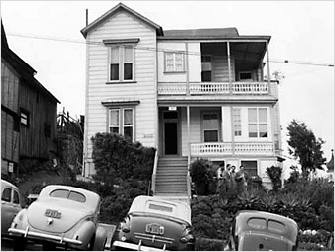
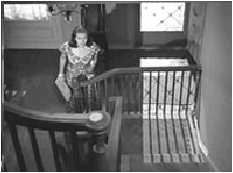
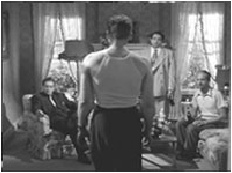
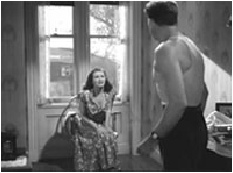
This house at 215 Hill St. played a prominent role in the film including the interior scenes at right.
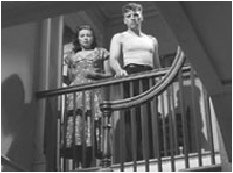
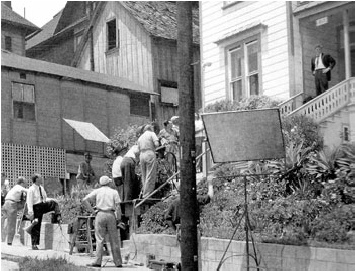


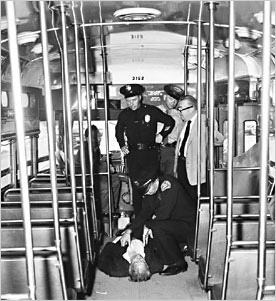
Reality -


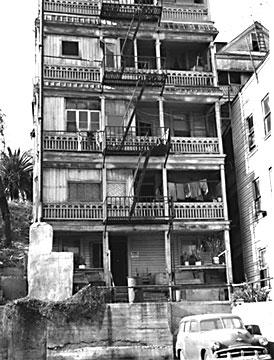
Bunker Hill’s seedy neighborhoods consisted dilap-
